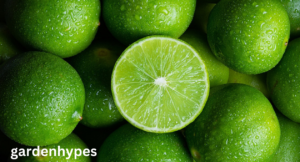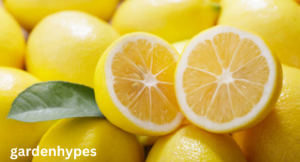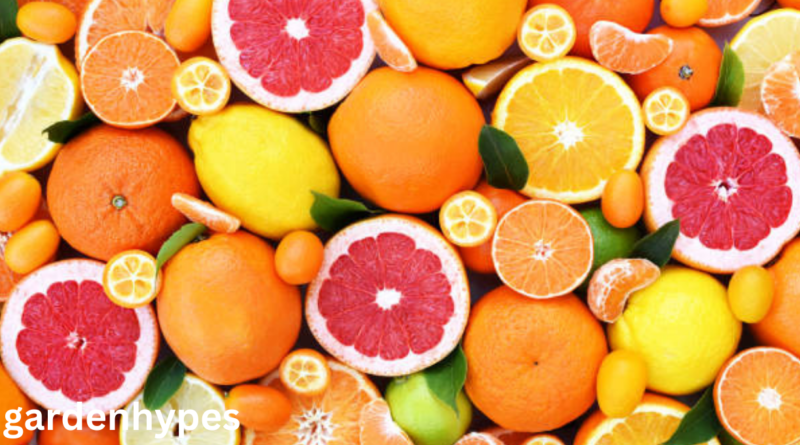Fruits That Look Like Lemons Citrus Look-Alikes You Should Know
Introduction
Have you ever walked through a market, spotted a fruit that looked exactly like a Fruits That Look Like Lemons, only to realize it wasn’t one at all? You’re not alone. Citrus fruits are a diverse family, and many of them share strikingly similar appearances. From their bright yellow color to their oval shapes, these fruits can easily fool even experienced shoppers.
click in link Fruits That Look Like Kiwi
But why does this happen? Simply put, many citrus fruits belong to the same broader plant family, which means they share genetic similarities. Over centuries of cultivation, farmers and botanists have bred hybrid varieties that carry lemon-like traits. That’s why today, when you browse grocery store shelves or wander through a farmer’s market, you may see several fruits that could pass for lemons at first glance.
The appeal of these lemon look-alikes goes beyond their appearance. Many of them are prized for their unique flavors, ranging from sweet and floral to tart and aromatic. Some are staples in international cuisines—like yuzu in Japan or kaffir lime in Thailand—while others, such as citron or Buddha’s hand, hold deep cultural and even spiritual significance.
This guide explores all the fascinating fruits that resemble lemons. We’ll break down their differences, highlight their special qualities, and show you how they’re used in cooking, medicine, and traditions worldwide. By the end, you’ll not only be able to spot the impostors but also appreciate the incredible diversity of citrus fruits that look like lemons but taste completely different.
Key Characteristics of Lemons
Before we can identify which fruits look like lemons, we need to understand what makes a lemon a lemon. Lemons are medium-sized citrus fruits, usually oval or slightly oblong in shape, with pointed ends. Their most recognizable feature is their bright yellow rind, which has a textured, dimpled surface. Inside, the flesh is pale yellow, juicy, and packed with citric acid, giving lemons their signature sour taste.
From a nutritional perspective, lemons are powerhouse fruits. They’re an excellent source of vitamin C, a key nutrient for immune health, skin repair, and overall vitality. They also contain antioxidants, potassium, and small amounts of vitamin B6. Because of this nutrient-rich profile, lemons are often associated with detox diets, digestion aids, and natural remedies.
Lemons are incredibly versatile in the kitchen. They’re used in beverages, marinades, baked goods, dressings, and as garnishes. Their zest (the outer peel) adds a fragrant citrus punch to both sweet and savory dishes, while lemon juice balances flavors with its sharp acidity.
Now that we’ve established what defines a true lemon, it’s easier to see why certain fruits are mistaken for them. Many citrus relatives share the same oval shape, yellow rind, and aromatic scent. However, subtle differences in size, flavor, or texture reveal that they aren’t lemons at all.
Fruits Commonly Mistaken for Lemons
There are several fruits around the world that look so similar to lemons that they often cause confusion. Some of these are close relatives, while others are hybrids or completely different fruits that just happen to share lemon-like traits.
Here’s a quick overview of the main contenders:
- Limes – While usually green, some limes turn yellow when fully ripe, making them almost indistinguishable from lemons.
- Citron – One of the oldest citrus fruits, citron often resembles a large, rough-skinned lemon.
- Yuzu – A Japanese citrus fruit, yuzu has a rounder shape but the same yellow coloring as lemons.
- Kaffir Lime – Its bumpy skin and strong aroma can trick you into thinking it’s a lemon relative.
- Buddha’s Hand – This unusual fruit looks like multiple lemon “fingers” fused together.
- Calamondin – A tiny citrus that looks like a small lemon or lime.
- Bergamot Orange – Known for flavoring Earl Grey tea, its appearance sits between lemon and orange.
- Amalfi Lemons – Giant lemons from Italy that resemble oversized versions of the standard lemon.
Each of these fruits has its own unique identity and purpose in cooking and culture. While they share the lemon’s sunny appearance, they offer flavors that range from sweet and floral to sharp and medicinal.
In the next sections, we’ll break them down one by one, starting with the most common comparison—limes.
Limes vs. Lemons
At first glance, limes and lemons seem like close siblings, and in many ways, they are. Both belong to the citrus family, and both are prized for their sharp, refreshing acidity. But there are some clear differences once you take a closer look.
Color and Size: Lemons are typically bright yellow when ripe, while limes are usually green. However, limes can turn yellow as they mature, which is when people often confuse them for lemons. In terms of size, lemons tend to be slightly larger and more oblong, whereas limes are smaller and rounder.
Flavor Profile: Lemons have a tart, sour flavor with a hint of sweetness. Limes, on the other hand, are sharper and slightly more bitter. This makes lemons more common in desserts and baked goods, while limes dominate cocktails, savory dishes, and tropical cuisines.
Culinary Uses: Lemons shine in recipes like lemon bars, lemonade, salad dressings, and roasted chicken. Limes are essential in margaritas, Thai curries, guacamole, and seafood marinades. Despite their differences, they can sometimes be used interchangeably, though the resulting flavor will shift subtly.
click in link Fruits That Look Like Kiwi

Nutritional Value: Both lemons and limes are excellent sources of vitamin C and antioxidants. Limes contain slightly less vitamin C but offer more unique flavonoids that contribute to their distinct health benefits.
So, while limes can look like lemons when fully ripe, their sharper flavor and smaller size set them apart. Still, many people mistakenly grab a ripe yellow lime thinking it’s just another lemon.
Citron – The Ancient Lemon Cousin
Citron (Citrus medica) is one of the oldest citrus fruits, often considered the ancestor of modern lemons. Its appearance is where much of the confusion begins. From a distance, a citron can look like a large, rough-textured lemon. Its rind is thick, bumpy, and yellow, giving it that unmistakable lemon-like appearance.
However, citron differs significantly once you cut it open. Unlike lemons, which are juicy, citrons contain very little pulp or juice. Instead, the fruit is mostly rind and pith (the white inner layer beneath the skin). This makes citron unsuitable as a juice fruit, but highly valuable for its aromatic zest.
Historically, citron has held religious and cultural significance. In Jewish tradition, the etrog (a type of citron) is used during the festival of Sukkot. In ancient times, it was also prized for medicinal purposes, believed to aid digestion and ward off illnesses.

Culinarily, citron is most commonly used in candied form. Its thick peel is perfect for candying, which is why it often appears in fruitcakes, pastries, and traditional holiday desserts. In Mediterranean cuisines, citron zest is used to infuse liqueurs and syrups with a bright, citrusy aroma.
While it may look like an oversized lemon, citron is truly a fruit of its own. Its role in history, culture, and cuisine makes it one of the most fascinating lemon look-alikes you’ll ever come across.
click in link Fruits That Look Like Kiwi22
faqs
1. What fruits are most commonly mistaken for lemons?
The most common lemon look-alikes include limes (especially when they ripen and turn yellow), citron, yuzu, kaffir lime, Buddha’s hand, calamondin, bergamot orange, and oversized regional lemons like Amalfi lemons. At a glance, they share the same yellow skin and oval shape, but their flavors, aromas, and uses vary widely.
2. How can I tell the difference between a lemon and a lime?
The easiest way to tell them apart is by size and taste. Lemons are usually larger, oval-shaped, and bright yellow, with a tart yet slightly sweet flavor. Limes are smaller, rounder, and typically green—though they can turn yellow when ripe. Limes also taste sharper and more bitter than lemons.
3. Is citron the same as a lemon?
No, citron is not the same as a lemon, although it looks similar. A citron has a very thick rind and very little juice, while lemons are juicy and commonly used for drinks, cooking, and baking. Citron is mainly valued for its aromatic peel, which is often candied or used in flavoring.
4. What is Buddha’s hand fruit, and why does it look like a lemon?
Buddha’s hand is a unique citrus fruit that looks like a cluster of yellow “fingers” extending from a base. Its skin and color resemble a lemon, which is why people often confuse the two. Unlike lemons, Buddha’s hand contains no pulp or juice—it’s almost entirely rind. It’s used for zesting, perfuming, and symbolic offerings.
5. Can lemon substitutes like yuzu or bergamot be used in cooking?
Yes, many lemon look-alikes can be used as substitutes in cooking, but they each bring their own twist. Yuzu adds a floral, aromatic citrus note popular in Japanese dishes. Bergamot is known for flavoring Earl Grey tea and can add a perfumed lemon-orange flavor to desserts. While they look like lemons, they provide unique tastes that may change the outcome of your dish.
